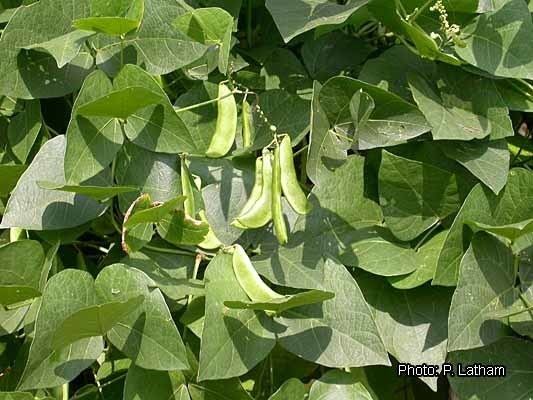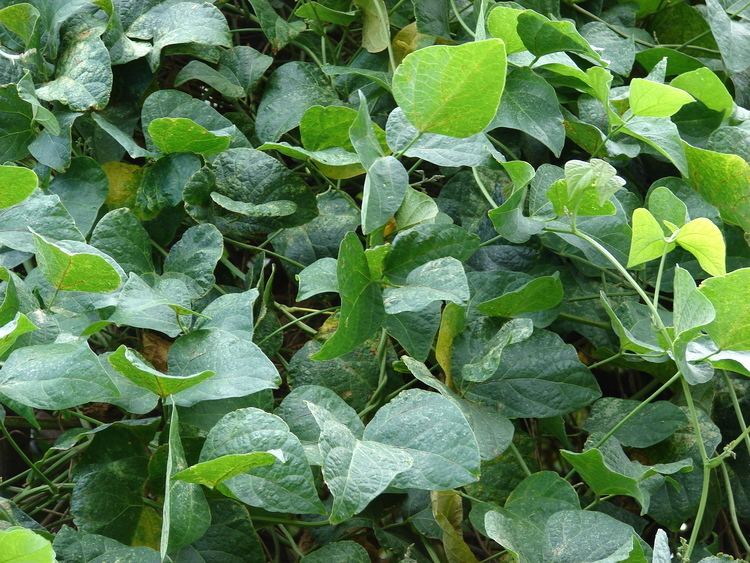Kingdom Plantae Family Fabaceae Tribe Phaseoleae | Order Fabales Subfamily Faboideae Genus Phaseolus | |
 | ||
Similar Common Bean, Navy bean, Bean, Broad bean, Green bean | ||
Phaseolus lunatus pallar inca
Phaseolus lunatus is a legume grown for its edible seeds or beans.
Contents
- Phaseolus lunatus pallar inca
- Names
- Origin and uses
- Cultivars
- Bush types
- Pole types
- Health and nutrition
- Health hazards
- Blood sugar
- Heart
- References
Names
It is commonly known as the lima bean, butter bean, or sieva bean.
Origin and uses

Phaseolus lunatus is of Andean and Mesoamerican origin. Two separate domestication events are believed to have occurred. The first, taking place in the Andes around 2000 BC, produced a large-seeded variety (lima type), while the second, taking place in Mesoamerica around 800 AD, produced a small-seeded variety (Sieva type). By around 1300, cultivation had spread north of the Rio Grande, and in the 1500s, the plant began to be cultivated in the Old World.

The small-seeded (Sieva) type is found distributed from Mexico to Argentina, generally below 1,600 m (5,200 ft) above sea level, while the large-seeded wild form (lima type) is found distributed in the north of Peru, from 320 to 2,030 m (1,050 to 6,660 ft) above sea level.

The Moche Culture (1–800 CE) cultivated lima beans heavily and often depicted them in their art. During the Spanish Viceroyalty of Peru, lima beans were exported to the rest of the Americas and Europe, and since the boxes of such goods had their place of origin labeled "Lima, Peru", the beans got named as such. Despite the origin of the name, when referring to the bean, the word "lima" is generally pronounced differently than the Peruvian capital.

The term "butter bean" is widely used for a large, flat and yellow/white variety of lima bean (P. lunatus var. macrocarpus, or P. limensis).
In the United States Sieva-type beans are traditionally called butter beans, also otherwise known as the Dixie or Henderson type. In that area, lima beans and butter beans are seen as two distinct types of beans.
In Spain, it is called garrofón, and constitutes one of the main ingredients of the famous Valencian paella.
In the United Kingdom and the United States, "butter beans" refers to either dried beans which can be purchased to rehydrate, or the canned variety which are ready to use. In culinary use there, lima beans and butter beans are distinct, the latter being large and yellow, the former small and green. In areas where both are considered to be lima beans, the green variety may be labelled as "baby" (and less commonly "junior") limas.
Cultivars
Both bush and pole (vine) cultivars exist, the latter range from 1 to 5 m in height. The bush cultivars mature earlier than the pole cultivars. The pods are up to 15 cm (5.9 in) long. The mature seeds are 1 to 3 cm (0.39 to 1.18 in) long and oval to kidney-shaped. In most cultivars the seeds are quite flat, but in the "potato" cultivars, the shape approaches spherical. White seeds are common, but black, red, orange, and variously mottled seeds are also known. The immature seeds are uniformly green. Lima beans typically yield 2,900 to 5,000 kg (6,400 to 11,000 lb) of seed and 3,000 to 8,000 kg (6,600 to 17,600 lb) of biomass per hectare.
The seeds of the cultivars listed below are white unless otherwise noted. Closely related or synonymous names are listed on the same line.
Bush types
Pole types
Health and nutrition
Lima beans, like many other legumes, are a good source of dietary fiber, and a virtually fat-free source of high-quality protein.
Lima beans contain both soluble fiber, which helps regulate blood sugar levels and lowers cholesterol, and insoluble fiber, which aids in the prevention of constipation, digestive disorders, irritable bowel syndrome and diverticulitis.
In the United States, when Lima beans are served mixed with sweet corn, it is called succotash.
Health hazards
Like many beans, butter beans are toxic (containing e.g. phytohaemagglutinin) if not boiled for at least 10 minutes. In one case all the people who ate falafel made with dried butter beans (rather than traditional broad beans or chickpeas) that had been soaked but not boiled, then ground, made into patties, and shallow fried, had serious food poisoning.
Blood sugar
The high fiber content in lima beans prevents blood sugar levels from rising too rapidly after eating them due to the presence of large amounts of absorption-slowing compounds in the beans, and their high soluble fiber content. Soluble fiber absorbs water in the stomach, forming a gel that slows down the absorption of the bean's carbohydrates. They can therefore help balance blood sugar levels while providing steady, slow-burning energy, which makes them a good choice for people with diabetes suffering with insulin resistance.
Heart
Soluble fiber binds with the bile acids that form cholesterol and, because it is not absorbed by the intestines, it exits the body, taking the bile acids with it. As a result, the cholesterol level is lowered. They may, therefore, help to prevent heart disease.
Lima beans also provide folate and magnesium. Folate lowers levels of homocysteine, an amino acid that is an intermediate product in the metabolic process called the methylation cycle. Elevated blood levels of homocysteine are an independent risk factor for heart attack, stroke, and peripheral vascular disease.
The magnesium content of lima beans is a calcium-channel blocker. When enough magnesium is present, veins and arteries relax, which reduces resistance and improves the flow of blood, oxygen, and nutrients throughout the body.
